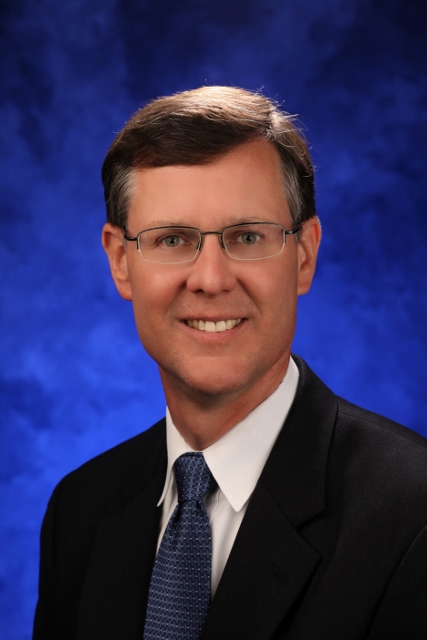In collaboration with CHIME, Becker's Hospital Review's "Life of a Healthcare CIO" series features leading hospital and health system CIOs from across the country who are sharing their experiences, best practices and challenges.
To recommend a CIO to be featured in this series, please contact Helen Gregg (hgregg@beckershealthcare.com).
An interview with Rod Dykehouse, CIO of Penn State Milton S. Hershey (Pa.) Medical Center. (Interview has been edited for length and clarity.)
Question: You've been CIO of Penn State Hershey Medical Center since July 2012. How has your job changed since you began?
Rod Dykehouse: Generally, the role is more complex than it ever has been, but there's a combination of challenge and excitement about the opportunities. It's largely due to the speed of change — there's no historical guidance on how IT should deal with the new demands in healthcare like changes in payments and genomics.
On the technology side, it's more of the demand for personalized medicine, mobilization, software as a service. The opportunity for healthcare leaders in general and CIOs in particular is that we have to be more agile, proactive and strategic in our guidance. We're becoming partners [with the other executives], not just managers of technology. We must provide value to our organizations. That's the goal.
Q: In your time with Penn State Hershey, what has been your biggest accomplishment?
RD: The biggest accomplishment to date is the IT governance structure. The challenge we have as an academic medical center is the multiple missions of education, research, care and community, so when it comes to resources we don't have enough to do everything. That makes it even more necessary to evaluate and prioritize funding initiatives across the enterprise. The new governance process uses advisory councils from the research and clinical side to help decide resource use and which initiatives to pursue. It's still early, but it's made a difference in this budget cycle — looking beyond a single app to the broader mission and making decisions based on what's important for our future.
Q: What do you see as your biggest misstep or mistake?
RD: I think there's too many to name, not just here but in my career. There are always lots of mistakes, but the challenge is we have to learn from them and make them into teachable moments for the IT team and the enterprise.
Some of my mistakes were trying to do too much too fast. There's a time and a place for every idea. The organization is not always ready, but I've not always been patient. The same is probably true of my peers.
Q: In the past month or so, what project or challenge has taken up the majority of your time?
RD: There are a couple of projects. The IT governance and the typical IT department governing and budgeting process. We're in that cycle now, the process of deciding what to do and what to fund.
That's the typical. The atypical is we're planning a new data center. It will be a significant investment that will help position us for the future. The challenge is we don't know what the demands will be in the future on processing power or storage. We have a goal to do more genomic profiles and move that process from the research to the clinical side, meaning we will be doing genomic profiles on all or almost all of our patients. This will put a significant demand on the data center. It's challenging for us, but exciting and positions us for future success.
Q: What is the biggest challenge you're facing right now?
RD: In the short term, for myself and many others, it's information security. We just had the Heartbleed challenge, and there have been other malware challenges. We're putting together a new strategy so we can move to a more proactive response, so we can work to eliminate risks we will face in the future.
For healthcare, [data security] is also a cultural challenge. We have to be accountable for the security of all of our information — it's a big challenge given the complexities in healthcare.
Q: What is one lesson you've learned during your career that you'd like to share with other CIOs?
RD: The biggest lesson is to network; listen and learn from others in healthcare and in other industries. None of us have all the answers — healthcare is too big, too dynamic. And healthcare is not always the leader; technology can be leveraged from other industries to create positive disruptions in healthcare, like customer relationship technology, analytics and radio frequency identification.
The lesson for all of us is to build a network, build those relationships and ask questions of others. Look at what they're considering to grow their organization and add value.
More Articles in the "Life of a Healthcare CIO" Series:
The Life of a Healthcare CIO: Mercy's Gil Hoffman
The Life of a Healthcare CIO: Fletcher Allen's Chuck Podesta
The Life of a Healthcare CIO: Barnabas Health's Dr. Luis Taveras

